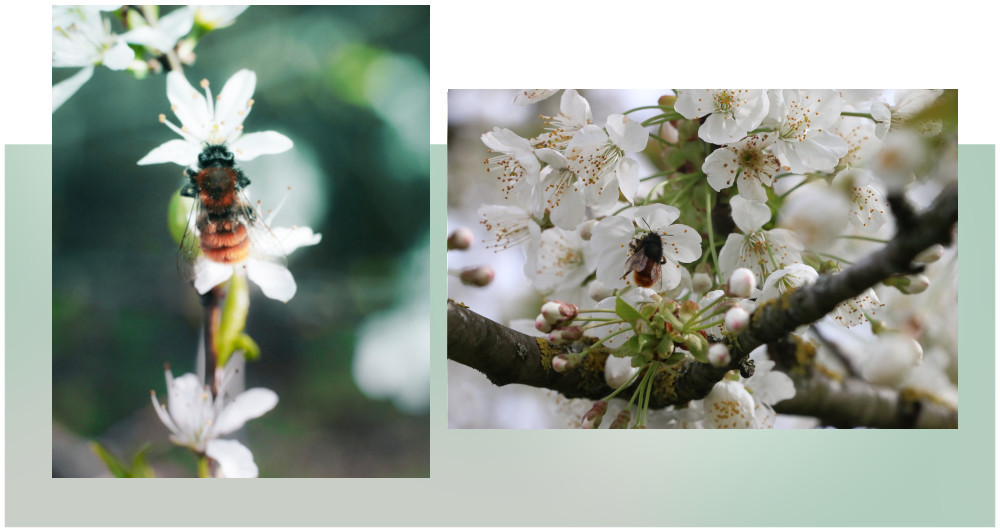MORE ABOUT
Solitary bees
Two types of solitary bees are known in our regions: Osmia Cornuta and Osmia bicornis.
Both very valuable pollinators. Cornut type has been active since early spring days when it can be seen on the first saffron blossoms. Bicornis wakes up later, usually in mid-March. Their active life coincides with the period of flowering of fruit trees, which is why they are also called bee bees. To a large extent, they contribute to the pollination of various fruit types, from precocious plum blossoms to dune and thorax.
The life span during which pollination lasts between 5 and 7 weeks. They resurface in cavities of 6 to 12 mm in diameter, where they lay eggs and food for them - a mixture of pollen and nectar. During the summer, a larva is being developed from the egg, which is transformed early in the autumn into a wholemeal adult bee that fades in winter and is lying in the spring to close the life cycle.

Advantage compared to other pollinators:
- One female solitary bee in terms of pollination is worth as much as 120 honey bees
- The flower that a solitary bee visits will be pollinated with a probability of 98% while in honey the probability is 15%
- They are active at temperatures of just 6 ° C and do not bother them with light rain. The medullary bee from his hive does not rise below 12 ° C
- They fly often from one tree to another, thus enhancing cross-pollination
- They are not picky about the kind of flower
- If they have enough flowers, they fly in the radius 100 m from their place
- The activity time can be adjusted to match the period of flowering of the fruit tree
- They are successfully applied in patches covered with netting, plant protected by plastic foil or anti-insect net
- They do not require nutrition or other treatments like honey bees and are therefore easier to maintain
- They are not using the sting
- Croatian indigenous species
